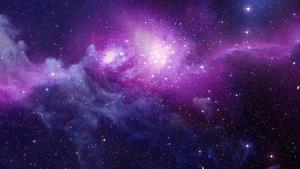11757905
Topic 6 - The rate and extent of chemical change
Description
Flashcards by finn squires, updated more than 1 year ago
More
Less

|
Created by finn squires
almost 7 years ago
|
|
Resource summary
| Question | Answer |
| Describe rate of reaction in terms of graphs? | steeper line = faster rate of reaction. Over time it levels off as reactants get used up. The quickest reactions are the steepest and level off in the least time. |
| What is a successful collision and what does it depend on? | A successful collision is a collision that ends in the particles reacting to form products. It depends on; the particles need to collide and particles need energy (at least the activation energy). |
| What four things does a rate of reaction depend on? | Temperature, concentration/pressure, surface area, catalyst present. All of these things are just methods of increasing the frequency of collisions hence increasing the rate of reaction. |
| How does temperature affect the rate of a reaction? | increase in temperature=increase in particle speed=increased frequency of collisions and particles have more energy so more successful collisions. |
| How does concentration/pressure affect the rate of a reaction? | increase in conc/press=increase of particles in the same volume/decrease volume with same number of particles=increase in frequency of collisions. |
| How does surface area affect the rate of a reaction? | increase in surface area (break up reactants into smaller pieces)=increase in surface area to volume ratio (same volume but particles have more to react with)= increase in frequency of collisions. |
| How does catalyst presence affect the rate of a reaction? | catalyst present=decrease in activation energy (provides an alternative reaction pathway with a lower activation energy,Ea)=more successful collisions. Enzymes are biological catalysts. |
| What is the formula for rate of reaction? | rate of reaction= amount of reactant used or product made/time |
| What are the three main ways of measuring the rate of a reaction? | precipitation and colour change - time how long it takes for a cross to disappear/colour change. change in mass (usually a gas) - as gas is released, the mass disappearing is measured on a balance in regular intervals. Faster mass drops= faster the rate of reaction. Volume of gas given off - gas syringe measures the volume of gas given of. More gas in certain time, the faster the reaction. |
| What are the main rates of reaction experiments? | Magnesium + Hal to produce H2 gas - gas syringe. How conc of acid affect rate of reaction. Sodium thiosulfate and Hal produces a cloudy precipitate - black cross marker. |
| What are the two ways of finding rate of reaction from a graph? | 1. change in y/change in x at any two points. 2. gradient of a tangent from one point. |
| Explain how reversible reactions will reach equilibrium? | 1. as reactants react, their concentrations fall - so the forward reaction will slow down. But as more and more products are made and their concentrations rise, the backwards reaction will speed up. 2. after a while the forward reaction will be going at exactly the same rate as the backward one. The system is at equilibrium. 3. at equilibrium, both reactions are still happening, but there is no overall effect. This means the concentration of the reactants and products have reached a balance and will not change. 4. its only reached in a closed system. |
| What does le Chatelier's principle basically mean? | If you change the conditions of a reversible reaction at equilibrium, the system will try to counteract the change. |
| What will happen to the reversible reaction at equilibrium when the temperature is changed? | Increase in temp it favours the endothermic side. Decrease in temp it favours the exothermic side. |
| What will happen to the reversible reaction at equilibrium when the pressure is changed? | Increase in press it favours the side with the fewer moles. Decrease in pressure it favours the side with more moles. |
| What will happen to the reversible reaction at equilibrium when the concentration is changed? | Increase in conc of reactants it favours the products. Decrease in conc of products it favours the reactants. |
| What will happen to the reversible reaction at equilibrium when a catalyst is added? | No effect. |
Want to create your own Flashcards for free with GoConqr? Learn more.
Similar
Chemistry GCSE Review - States of Matter, Particles, Atoms, Elements, Compounds and Mixtures
Morgan Overton
